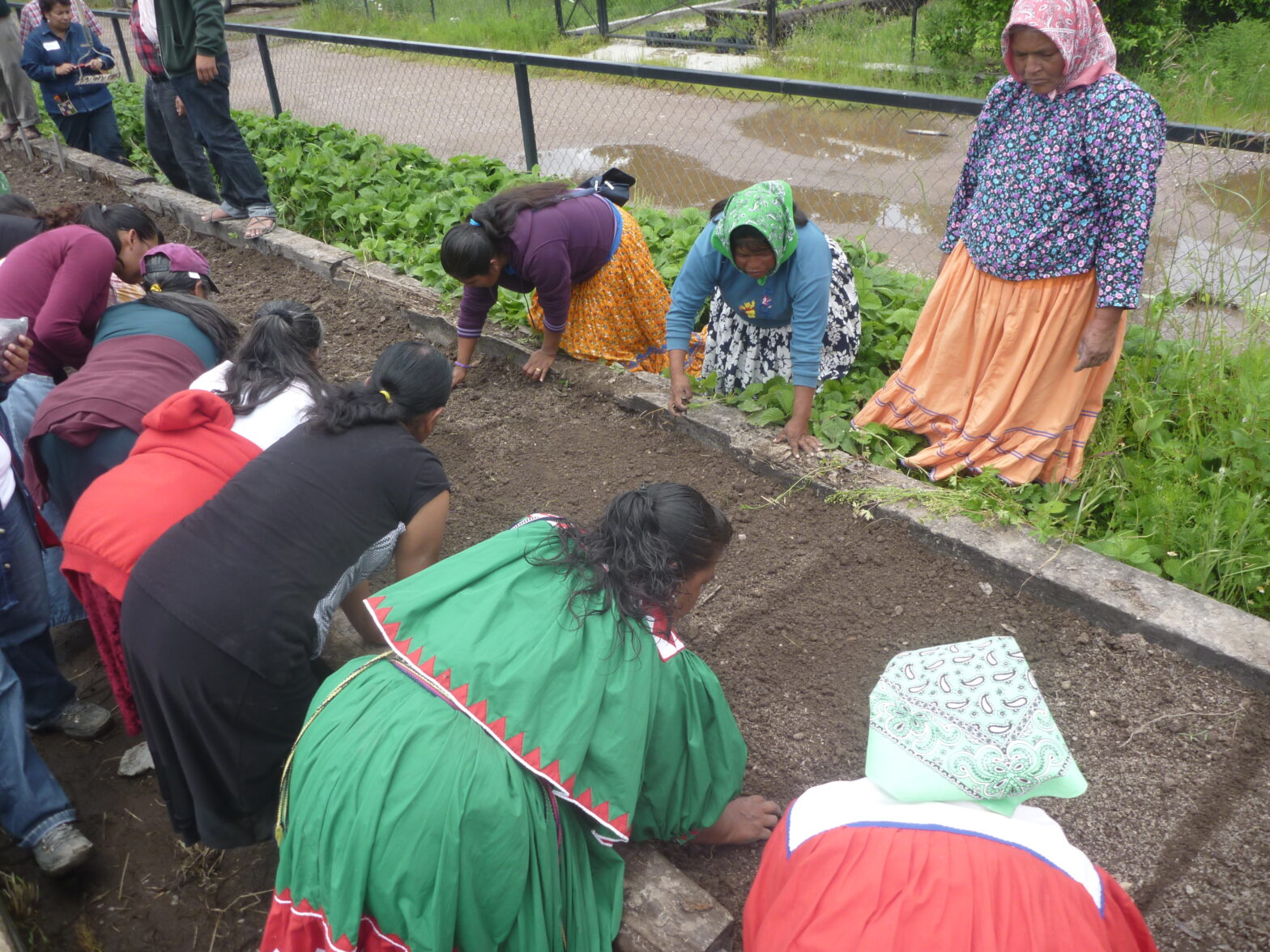Integration of edible greens into the production chain to ensure food security in the Sierra Tarahumara
Organization: Botanic Garden, Institute of Biology, Universidad Nacional Autónoma de México
Location:
Communities in the Municipalities of Bocoyna (Gumisachi, Talayotes de los Volcanes, San Luis Majimachi, Choguita and San Ignacio Arareco); Guerrero (Pichachic).
Country: Mexico
Other Organizations Involved:
- Escuela Pastoral, Creel
- MACHI-KO A.C.
- Fundación Llaguno A.C.
- Conanp, Papigochic
- Conanp, Sierra Tarahumara
- Umafor, San Juanito
- La Troje de Adobe, Sustainable Tourism and Cultural Service

Background
The ethnobotany research team at the Botanic Garden of the UNAM Institute of Biology, in line with its responsibility as a steward of biodiversity, is carrying out a pilot program on the inventory of "edible greens" in Chihuahua’s Sierra Tarahumara, to conserve and expand the availability and consumption of these native plants, known in the Rarámuri language as “giribá”. Leaf vegetables have been used as food in the region since ancient times.
Their high content of essential vitamins and minerals has also enriched the traditional diet with a variety of smells, flavors and textures. As the area’s climate conditions are very restrictive, this food is usually consumed solely during rainy months (June-August), when conditions allow, production under protected farming, bio-intensive management techniques and water catchment systems will make them available year-round. This is intended to enrich the Tarahumara diet, contributing to this cultural group’s food security and integrating these food resources into a commercial supply chain.
Goals
- Foster the production of native vegetables by deploying bio-intensive management practices.
- Expand the consumption of edible greens throughout the year.
- Train the general population on the preparation and processing of edible greens byproducts for sale.
- Maintain a semi-intensive edible greens production system to foster the efficient use of resources in the Sierra Tarahumara.
Main Activities
Goal 1:
- Creation of awareness among the members of six communities on the advantages of using bio-intensive gardening methods.
- Establishment of bio-intensive plant beds.
- Compilation and analysis of results.
Goal 2:
- Ongoing production and maintenance of bio-intensive plant beds.
- Compilation and analysis of results.
Goal 3:
- General training workshop.
- Community training workshops.
- Preparation of food samples for potential consumers.
- Compilation and analysis of results.
Goal 4:
- Adapt irrigation and water storage systems to bio-intensive plant beds.
- Composting with manure and sawdust.
- Compilation and analysis of results.
Results
Goal 1:
- Awareness creation among five families in six communities in the Sierra Tarahumara.
- High-performance, bio-intensive plant beds.
- Technical sheets on families, survey analysis, posters, triptychs and crop data sheets.
Goal 2:
- Consumption and production of several varieties of edible greens throughout the year.
- Family diet analysis.
Goal 3:
- Assessment of knowledge before and after workshop.
- Catalog of processed products.
- List and prioritization of accepted products.
- Final presentation of processed products accepted, descriptive records and workshop summaries.
Goal 4:
- Maintain a comprehensive system, including water catchment, storage, transportation and use, with 60% savings.
- Increase soil fertility.
- Phytochemical soil analysis.